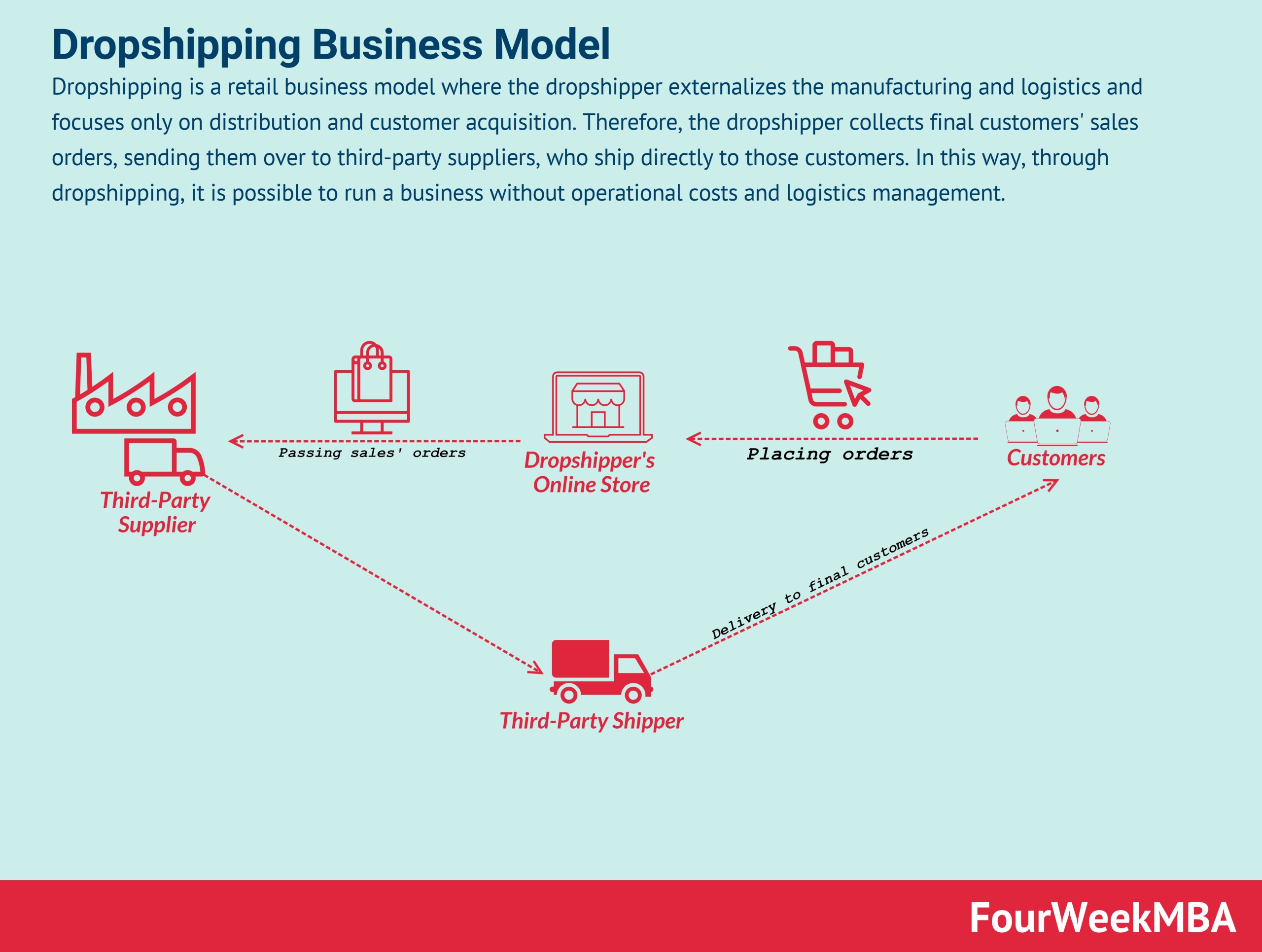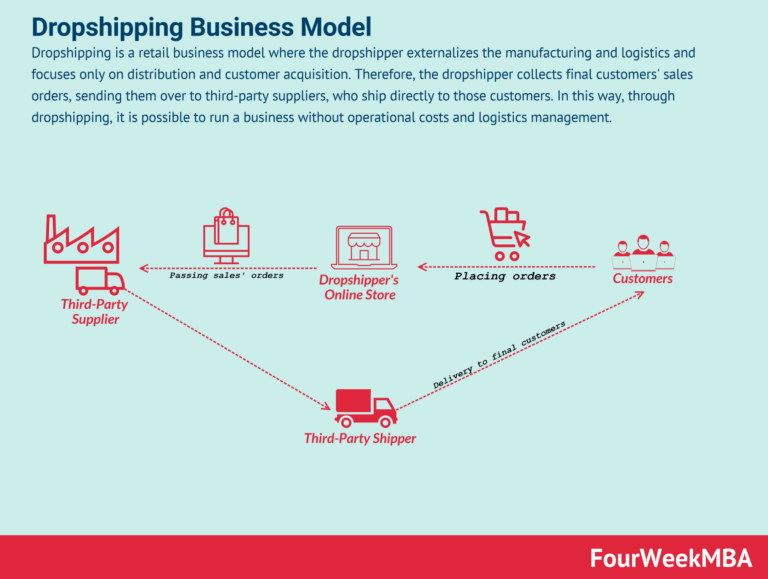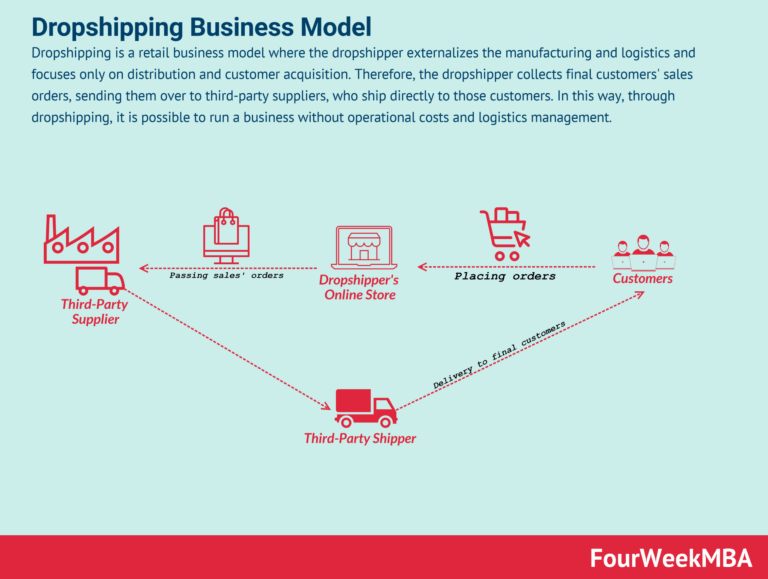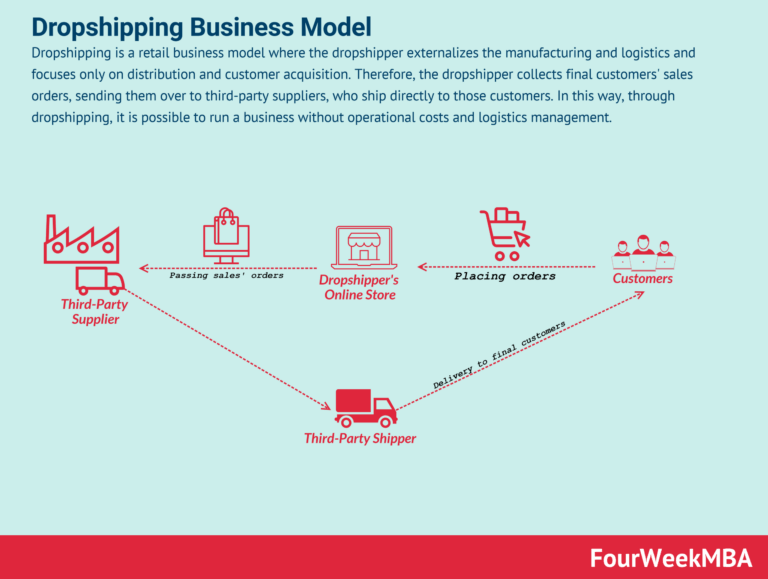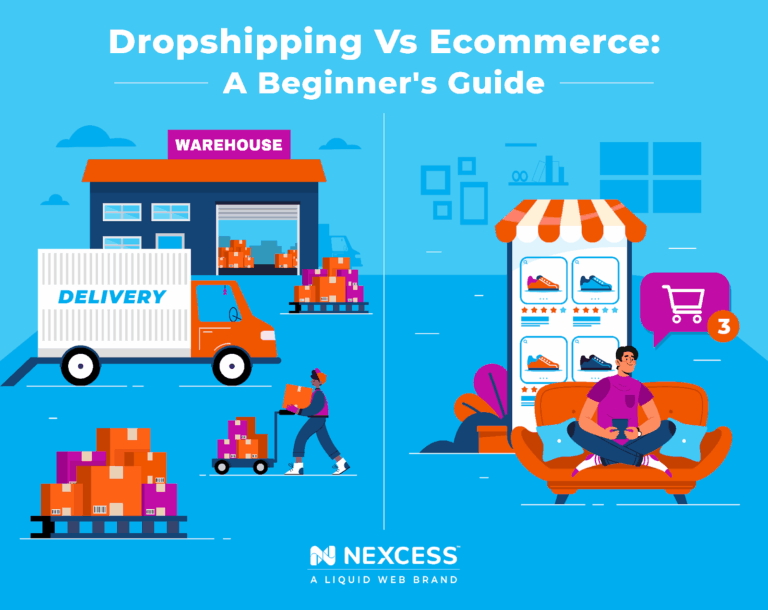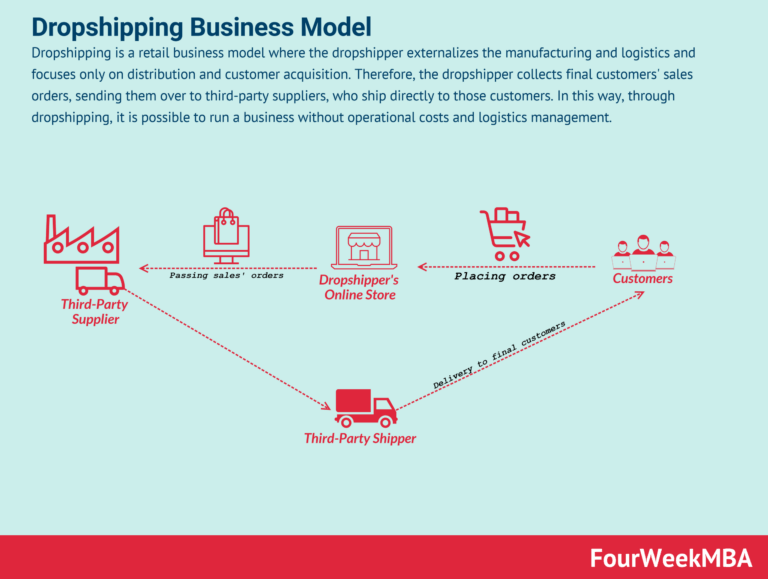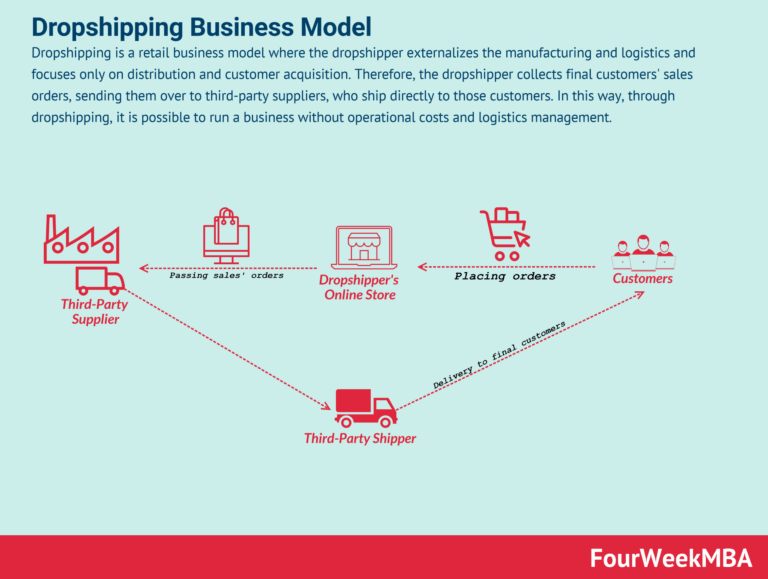How to Start Dropshipping in 2025 (A Beginner’s Guide)
Your Complete Guide to dropshipping companies
Welcome to Your Entrepreneurial Journey
Congratulations on taking the first step toward realizing your entrepreneurial dream! The world of e-commerce is vibrant and full of opportunities, especially with the rise of dropshipping—a business model that allows you to sell products online without the burden of managing inventory or handling shipping logistics. This means you can focus on growing your brand while minimizing upfront costs, making it an appealing option for aspiring entrepreneurs like you.
So, what exactly is dropshipping? In simple terms, dropshipping is a retail fulfillment method where you, the retailer, don’t keep the products you sell in stock. Instead, when you make a sale, you purchase the item from a third party—usually a wholesaler or manufacturer—who then ships it directly to your customer. This eliminates the need for a physical storefront or warehouse, allowing you to operate your business from anywhere with an internet connection.
The allure of dropshipping lies in its low startup costs and flexibility. You don’t need to invest thousands of dollars in inventory upfront, which significantly lowers your financial risk. Plus, you can easily adapt your product offerings based on market trends and customer preferences, giving you the agility to thrive in a competitive landscape.
In this comprehensive guide, we will take you through a complete roadmap to building your dropshipping business. You’ll learn how to identify profitable niches, find reliable dropshipping suppliers, and select products that resonate with your target audience. We’ll also cover essential topics like integrating with e-commerce platforms, setting up your online store, and optimizing your sales strategies. Finally, we’ll delve into marketing tactics that can help you make your first sale and grow your customer base.
This guide is designed to empower you with the knowledge and tools you need to succeed. Remember, every successful entrepreneur started with a dream and the determination to turn that dream into reality. With commitment and the right strategies, you too can create a thriving online business. So, let’s embark on this exciting journey together and turn your entrepreneurial aspirations into a successful dropshipping venture!
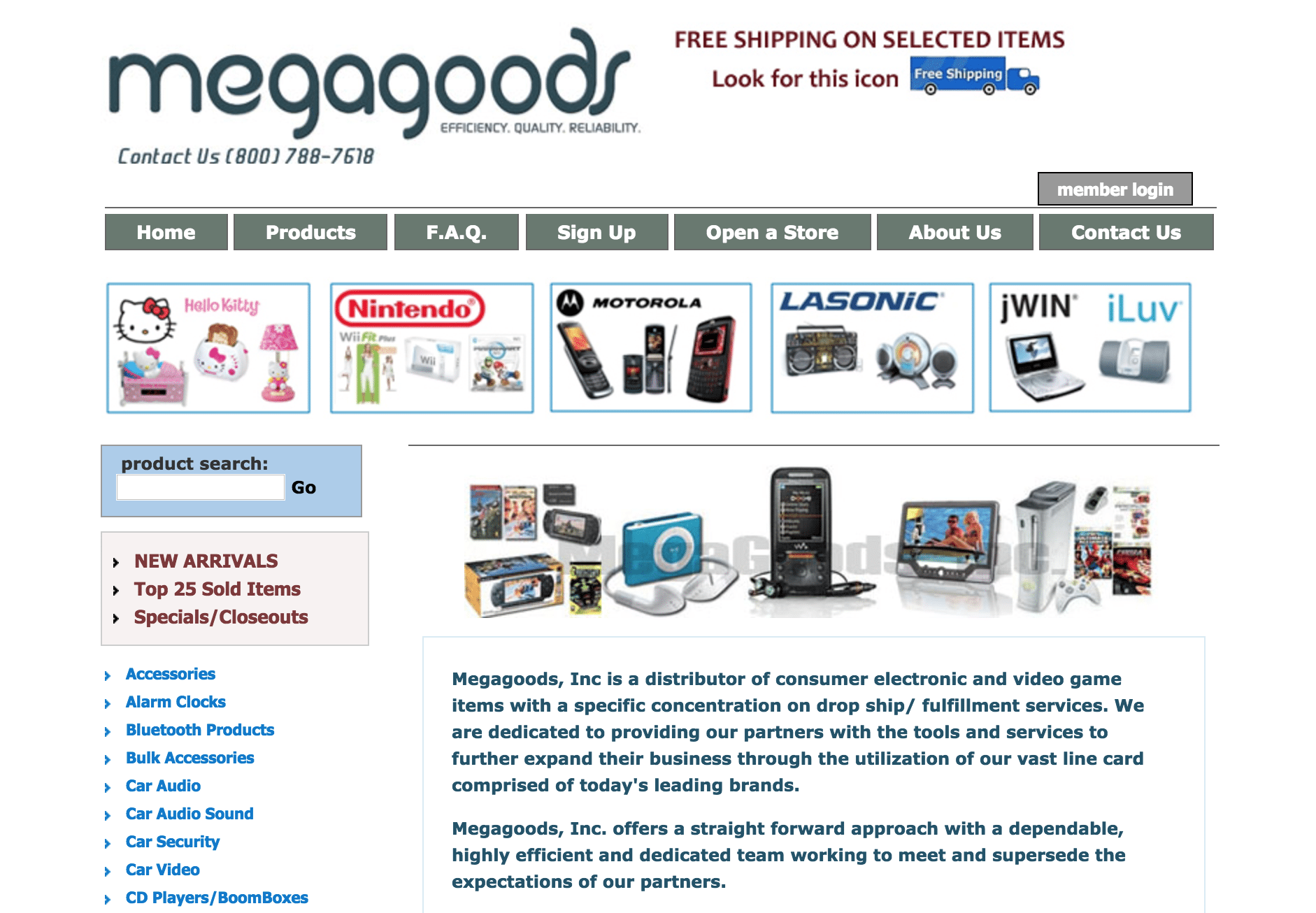
What You’ll Learn In This Guide
- Your Complete Guide to dropshipping companies
- How Does Dropshipping Actually Work? A Step-by-Step Breakdown
- The Pros and Cons of Dropshipping: Is It Right for You?
- Step 1: Finding a Profitable Niche and Winning Products
- Step 2: Choosing the Right Dropshipping Suppliers
- Step 3: Building Your Online Store
- Step 4: Marketing Your Dropshipping Business to Get Sales
- Common Mistakes to Avoid as a Beginner
- Frequently Asked Questions (FAQs) about dropshipping companies
- Conclusion: Your Next Steps to Launching Your Business
- Important Disclaimer
How Does Dropshipping Actually Work? A Step-by-Step Breakdown
Understanding the Dropshipping Model: A Step-by-Step Breakdown
Starting a dropshipping business can seem overwhelming, but understanding how the model works is crucial for success. Think of yourself as the digital storefront and middleman, connecting customers with products without ever holding inventory. Here’s a clear breakdown of the dropshipping process, step-by-step:
- Customer Places an Order on Your Online Store
-
When a customer visits your e-commerce site and finds a product they love, they place an order. This is the first interaction in the dropshipping model, and it’s vital that your website is user-friendly and visually appealing to encourage purchases. Ensure your product descriptions are enticing and your checkout process is smooth to minimize cart abandonment.
-
You Receive the Payment
-
Once the customer completes their purchase, you receive the payment directly. This typically includes the retail price of the item plus any shipping fees you may charge. It’s essential to have a secure payment processing system in place to build trust with your customers. Remember, this is your revenue—minus the cost of the product and any transaction fees.
-
You Forward the Order to Your Supplier
-
After receiving the payment, you take the next step: forwarding the order details to your dropshipping supplier. This is where the magic happens! You’ll provide the supplier with the customer’s shipping information and the details of the product sold. Many dropshipping platforms offer seamless integration that makes this process quick and efficient, allowing you to focus on marketing and customer service.
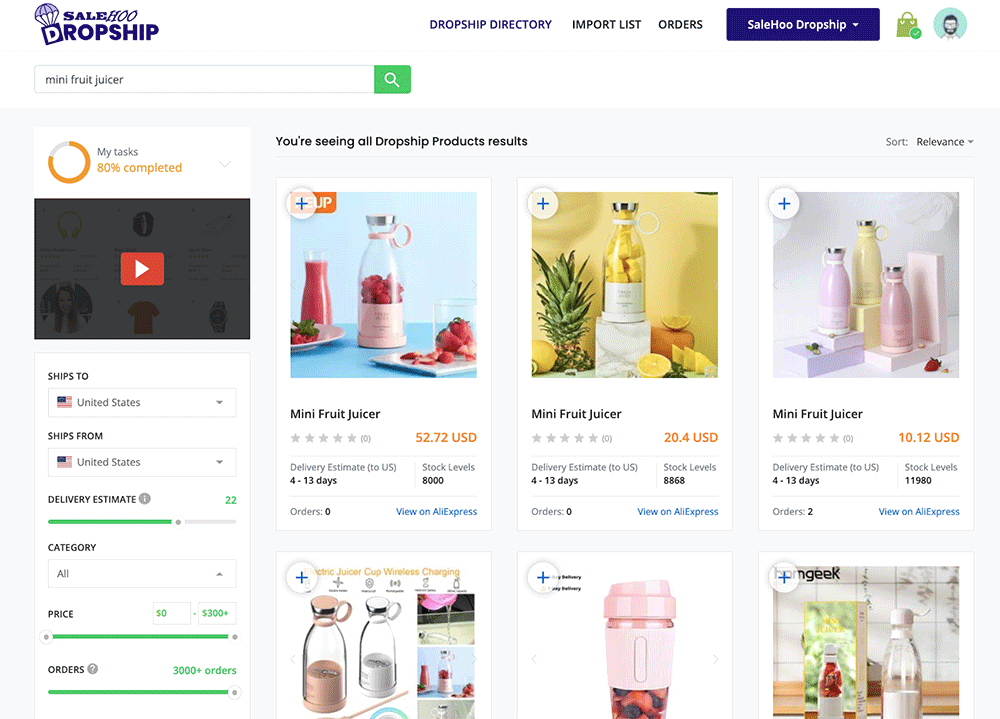
-
The Supplier Ships the Product Directly to the Customer
- Once the supplier receives the order, they handle the fulfillment. This means they pick, pack, and ship the product directly to your customer. The beauty of dropshipping is that you never have to deal with the physical product at any point. This eliminates the need for storage space and inventory management, drastically reducing overhead costs.
The Flow of Money and Goods
To illustrate how money and goods flow in the dropshipping model, consider this analogy: You’re like a restaurant owner who doesn’t cook the food but instead takes orders from customers and forwards them to a kitchen (the supplier).
- Money Flow:
- The customer pays you the retail price.
- You then pay the supplier the wholesale price for the product.
-
Your profit is the difference between the two amounts after accounting for any fees.
-
Goods Flow:
- The product moves directly from the supplier to the customer, bypassing you entirely. This ensures a fast delivery experience for the customer while you maintain a hands-off approach to inventory.
Key Takeaways for Aspiring Entrepreneurs
- Low Initial Investment: You don’t need to purchase inventory upfront, making dropshipping an attractive option for beginners.
- Focus on Marketing: Since you won’t be managing inventory, you can dedicate more time to growing your brand and marketing your products.
- Scalability: As your business grows, you can easily add more products and suppliers without the logistical headaches of traditional retail.
By understanding these steps and the flow of money and goods, you’ll be well on your way to successfully launching and managing your dropshipping business. Embrace the journey, stay organized, and always put your customers first!
The Pros and Cons of Dropshipping: Is It Right for You?
| ### Advantages of Dropshipping (Pros) | Challenges of Dropshipping (Cons) |
|---|---|
| Low Financial Risk: You don’t need to invest heavily in inventory upfront, which reduces the financial burden. | Low Profit Margins: The profit margins can be thin, often between 10-30%, due to high competition and supplier pricing. |
| Ease of Startup: Setting up a dropshipping business is relatively simple and requires minimal technical skills. | High Competition: Many entrepreneurs enter the dropshipping space, leading to saturated markets and fierce competition. |
| Flexibility and Location Independence: You can run your business from anywhere with an internet connection, allowing for a flexible lifestyle. | Supplier Reliance: Your business heavily relies on suppliers for product quality and shipping times, which can lead to customer dissatisfaction if they fail to deliver. |
| Wide Product Selection: You have access to a vast range of products without the need to store them, allowing for diverse offerings. | Limited Control Over Supply Chain: You have less control over inventory levels, product quality, and shipping times, which can impact customer experience. |
| Scalability: You can easily scale your business by adding new products and suppliers without the need for significant investment. | Customer Service Challenges: Handling returns, refunds, and shipping issues can be complicated, often requiring effective communication with suppliers. |
| No Inventory Management: You don’t need to worry about managing inventory, which simplifies operations significantly. | Potential for Brand Dilution: With many businesses selling the same products, it can be challenging to build a unique brand identity. |
Expanding on the Pros
Low Financial Risk
One of the most compelling advantages of dropshipping is the minimal financial risk involved. Traditional retail models require substantial upfront investment in inventory and warehousing, which can be daunting for aspiring entrepreneurs. With dropshipping, you only purchase products after you’ve made a sale, meaning you don’t have to worry about unsold inventory. This model is particularly appealing for beginners who may be testing the waters of entrepreneurship without the financial cushion to absorb potential losses.
Ease of Startup
Starting a dropshipping business is surprisingly straightforward. Various e-commerce platforms offer user-friendly interfaces that allow even those with minimal technical expertise to set up an online store. Platforms like Shopify, WooCommerce, and BigCommerce have integrated solutions that simplify the process of connecting with dropshipping suppliers. This ease of entry empowers new entrepreneurs to focus on marketing and sales rather than getting bogged down by complex logistics.
Flexibility and Location Independence
Another significant benefit of dropshipping is the flexibility it offers. You can operate your business from anywhere in the world, as long as you have internet access. This independence allows you to travel or work from home while managing your store. For many, this lifestyle appeal is a major draw, as it aligns with the desires for work-life balance and personal freedom.
Expanding on the Cons
Low Profit Margins
While dropshipping offers a low barrier to entry, it often comes with lower profit margins compared to traditional retail models. Since many dropshippers source products from the same suppliers, price competition can drive down profits. It’s not uncommon to see margins of 10-30%, which may not be sustainable in the long run. Entrepreneurs need to be strategic in their pricing and product selection to maintain profitability, often requiring a focus on niche markets to avoid direct competition.
High Competition
The accessibility of dropshipping means that countless entrepreneurs are vying for the same customer base, leading to saturated markets. This high competition can make it challenging to stand out and attract customers. Successful dropshippers often invest heavily in branding, marketing, and customer experience to differentiate themselves. This requires time, effort, and potentially additional financial resources, which can be overwhelming for beginners.
Supplier Reliance
The dropshipping model inherently relies on third-party suppliers for product quality and shipping. If a supplier fails to deliver on time or provides subpar products, it can directly affect your brand’s reputation and customer satisfaction. As a dropshipper, you must diligently vet suppliers and maintain open lines of communication to mitigate these risks. This level of dependency can be a double-edged sword, as you may find yourself at the mercy of your suppliers’ capabilities.
Conclusion
In summary, dropshipping presents an attractive entry point for aspiring entrepreneurs due to its low financial risk, ease of setup, and flexibility. However, the challenges of low profit margins, high competition, and supplier reliance cannot be overlooked. By carefully weighing these pros and cons, you can determine if dropshipping aligns with your business goals and personal aspirations. With the right strategy, mindset, and resources, dropshipping can be a rewarding venture that opens doors to entrepreneurial success.
Step 1: Finding a Profitable Niche and Winning Products
What Makes a Good Niche?
When venturing into the world of dropshipping, the first and most critical step is selecting a niche that not only excites you but also has the potential for profitability. Here are key characteristics of a good niche:
-
Passion and Interest: Choose a niche that aligns with your interests or hobbies. Your passion will sustain your motivation through the ups and downs of entrepreneurship.
-
Market Demand: A good niche should have a solid customer base. Conduct market research to ensure that there are enough people interested in your products. Use tools like Google Trends to gauge search volumes and seasonal patterns.
-
Profitability: Assess the profit margins in your chosen niche. Products should ideally have a price point that allows for a healthy markup after accounting for costs like shipping and supplier fees. A common target is to aim for a minimum of 30% profit margin.
-
Competition Level: Evaluate the competitive landscape. While some competition is healthy, entering an oversaturated market can be challenging. Look for niches where you can differentiate yourself, either through unique products, branding, or customer service.
-
Longevity: Ideally, select a niche with products that are not just fads but have a longer lifespan. This ensures your business can thrive over time without relying on fleeting trends.
How to Brainstorm Niche Ideas
Once you understand what makes a good niche, it’s time to brainstorm ideas. Here are some effective techniques:
-
Personal Experience: Reflect on your hobbies, skills, and experiences. What problems have you encountered that you could solve with a product? Your personal insights can lead to unique niche ideas.
-
Online Communities: Explore forums, social media groups, and platforms like Reddit. Observe discussions to identify common pain points and needs. This can provide inspiration for niches that are currently underserved.
-
Keyword Research: Use keyword research tools such as Ubersuggest or Ahrefs to find search terms related to your interests. High search volumes paired with low competition can indicate a viable niche.
-
Competitor Analysis: Look at what successful dropshipping stores are selling. Tools like SimilarWeb or SEMrush can provide insights into competitor traffic and top-selling products. Analyze their offerings for gaps that you could fill.
-
Trend Analysis: Utilize Google Trends, Pinterest Trends, and social media platforms like Instagram and TikTok to identify emerging trends. This can provide ideas for niches that are gaining traction.
Validating Your Niche
After brainstorming niche ideas, the next step is validation. This process ensures that your selected niche has real market potential.
-
Conduct Surveys: Use tools like SurveyMonkey or Google Forms to create surveys targeting your audience. Ask potential customers about their interests, problems, and willingness to purchase products in your niche.
-
Test with Minimal Investment: Consider running small ads on platforms like Facebook or Instagram to gauge interest. Direct users to a landing page with a product concept and see how many sign up or express interest.
-
Check Competitor Performance: Analyze competitors’ sales channels, product reviews, and customer engagement. Tools like Jungle Scout can provide insights into Amazon sales data, helping you understand product demand.
-
Join Niche-Specific Groups: Engage in Facebook groups or online communities related to your niche. Observe discussions and seek feedback on your ideas. This direct interaction can yield valuable insights.
-
Evaluate Supplier Availability: Ensure that you can source products for your niche reliably. Check platforms like TopDawg or Alibaba to see the variety and quality of products available for dropshipping.
Methods for Finding Winning Products
Once you have a validated niche, it’s time to find winning products that resonate with your audience. Here are effective methods and criteria to consider:
-
Supplier Marketplaces: Explore established dropshipping platforms like TopDawg, Oberlo, or Spocket. These platforms provide access to a wide range of products, often with insights on best-sellers and trending items.
-
Social Media Trends: Utilize social media platforms to identify trending products. Look for viral posts on TikTok or Instagram, as these can be indicators of what consumers are currently interested in.
-
Customer Feedback: Pay attention to customer reviews and feedback on competitor websites. Identify products that receive high ratings and assess if you can offer them with better pricing or service.
-
Online Marketplaces: Check platforms like Amazon, eBay, and Etsy for best-selling items in your niche. The “Best Sellers” and “Hot New Releases” sections can provide a glimpse into what products are in demand.
-
Criteria for a Good Dropshipping Product:
- Price Point: Aim for products priced between $15 and $200. This range often allows for a reasonable markup while remaining attractive to customers.
- Unique Selling Proposition: Look for products that are not easily found in local stores. This uniqueness can drive online sales.
- Problem-Solving: Products that solve specific problems or fulfill a need tend to perform well. Consider items that enhance convenience or improve lifestyle.
-
Shipping Considerations: Select lightweight and durable products to minimize shipping costs and potential damage during transit.
-
Use Data-Driven Tools: Leverage tools like Google Trends, Ahrefs, or SEMrush to analyze search volumes and keyword competitiveness for potential products. This can help you identify items that are gaining interest.
By following these steps and utilizing the right tools, you can confidently find a profitable niche and winning products for your dropshipping business. Remember, persistence and adaptability are key in this journey. Keep testing, learning, and refining your approach to ensure your business thrives in the competitive e-commerce landscape.
Step 2: Choosing the Right Dropshipping Suppliers
Understanding the Importance of Choosing the Right Dropshipping Suppliers
Selecting the right dropshipping supplier is a critical step in your e-commerce journey. The supplier you choose can significantly influence your business’s success, affecting everything from product quality to shipping times and customer satisfaction. Here, we’ll explore three major platforms for finding reliable dropshipping suppliers: AliExpress, CJ Dropshipping, and USA-Based Suppliers. Each has its strengths and weaknesses, and understanding these can help you make an informed decision that aligns with your business goals.
AliExpress
Overview
AliExpress is one of the largest online retail platforms, offering a vast range of products from suppliers primarily based in China. It is particularly popular among dropshippers due to its extensive catalog and ease of use.
Pros
- Diverse Product Range: With millions of products across various categories, you can find nearly anything to sell.
- No Upfront Costs: You can list products on your store without having to purchase inventory upfront.
- User-Friendly Platform: AliExpress is easy to navigate, making it suitable for beginners.
- Integration Options: Tools like Oberlo allow for seamless integration with Shopify, making order fulfillment straightforward.
Cons
- Long Shipping Times: Shipping from China can take several weeks, which may lead to customer dissatisfaction.
- Variable Quality: Since products come from various suppliers, quality can vary significantly.
- Customer Service Issues: Communication with suppliers may not always be reliable, and language barriers can complicate problem resolution.
CJ Dropshipping
Overview
CJ Dropshipping is a comprehensive dropshipping platform that offers a wide range of products and services, including sourcing, warehousing, and fulfillment.
Pros
- Faster Shipping: CJ has warehouses in various countries, including the USA, which can significantly reduce shipping times.
- Quality Control: CJ conducts quality checks on products before they are shipped, ensuring better product consistency.
- Custom Branding: Options for custom packaging and branding can help you build your brand identity.
- Wide Product Selection: CJ offers a variety of products, making it easier to find niche items.
Cons
- Learning Curve: The platform can be slightly more complex for beginners compared to AliExpress.
- Higher Costs: Some products may be priced higher than those on AliExpress, impacting your profit margins.
- Less Variety: While CJ has a diverse selection, it may not match the sheer volume of products available on AliExpress.
USA-Based Suppliers
Overview
Working with USA-based suppliers can be an excellent choice for dropshippers looking to provide faster shipping times and improve customer service.
Pros
- Faster Shipping: Orders typically ship within the USA, leading to quicker delivery times for customers.
- Better Customer Service: Easier communication with suppliers and better return policies can enhance customer satisfaction.
- Higher Product Quality: Many USA suppliers focus on quality, which can lead to fewer returns and complaints.
- Niche Specialization: Many USA suppliers specialize in specific niches, allowing for targeted marketing strategies.
Cons
- Higher Costs: Products from USA suppliers may come with higher price points, which could affect your margins.
- Limited Selection: Compared to global platforms like AliExpress, the product range may be narrower.
- Finding Reliable Suppliers: It may take more time and effort to find trustworthy suppliers in the USA.
What to Look for in a Good Supplier
When evaluating potential dropshipping suppliers, consider the following checklist to ensure you make the right choice:
- Communication: Ensure the supplier is responsive and can communicate clearly in your preferred language.
- Shipping Times: Look for suppliers with reasonable shipping times that meet your customers’ expectations.
- Product Quality: Research product quality through samples or reviews; high-quality products lead to satisfied customers and repeat business.
- Return Policies: Understand the supplier’s return policies. A good supplier should have a clear, reasonable return process.
- Pricing: Evaluate the supplier’s pricing structure to ensure it allows for a healthy profit margin while remaining competitive.
- Integration: Check if the supplier can integrate with your e-commerce platform, simplifying inventory management and order fulfillment.
- Reviews and Reputation: Look for reviews or testimonials from other dropshippers to gauge the supplier’s reliability and service quality.
- Scalability: Choose suppliers that can grow with your business, offering the ability to add more products or handle increased order volumes.
Conclusion
Choosing the right dropshipping supplier is a pivotal decision that can impact your business’s success. Platforms like AliExpress, CJ Dropshipping, and USA-based suppliers each offer unique advantages and challenges. By carefully evaluating your options and considering the factors outlined in this guide, you can find a reliable supplier that aligns with your business goals, ensuring a smoother path to success in your dropshipping venture. Remember, investing time in finding the right supplier will pay off in the long run, leading to happier customers and a more sustainable business model.
Step 3: Building Your Online Store
Getting Started with Shopify for Your Dropshipping Store
Setting up an online store for your dropshipping business can seem daunting, but with the right guidance, it can be an exciting and rewarding experience. Shopify is one of the most popular e-commerce platforms for dropshipping, known for its user-friendly interface and robust features. Let’s dive into the key steps to successfully build your online store.
1. Choosing a Shopify Plan
Before you can start designing your store, you need to select a Shopify plan that aligns with your business goals. Shopify offers several pricing tiers, including:
- Basic Shopify: Ideal for beginners, this plan includes essential features needed to start your dropshipping business.
- Shopify: This plan provides additional reporting and features, perfect for growing businesses.
- Advanced Shopify: Best for larger businesses that require more advanced reporting and lower transaction fees.
To choose the right plan, consider your budget and the features you’ll need as you grow. Shopify offers a 14-day free trial, allowing you to explore the platform without committing financially.
2. Picking a Theme
Once you’ve chosen a plan, it’s time to design your store. Shopify provides a wide selection of themes, both free and paid, that cater to various niches. When picking a theme, keep the following in mind:
- Aesthetic Appeal: Choose a theme that resonates with your brand identity and target audience.
- Mobile Responsiveness: Ensure the theme is mobile-friendly, as a significant amount of traffic comes from mobile devices.
- Customization Options: Look for a theme that allows you to easily customize colors, fonts, and layouts to match your vision.
After selecting a theme, you can customize it using Shopify’s intuitive drag-and-drop editor. Make sure to preview your changes and test the user experience.
3. Setting Up Essential Pages
To establish credibility and provide essential information to your customers, create the following pages:
- About Us: Share your story, mission, and values. This helps build a connection with your audience.
- Contact Page: Make it easy for customers to reach you. Include a contact form, email address, and phone number.
- Policies: Create pages for your store policies, including shipping, return, and privacy policies. These pages are crucial for transparency and customer trust.
You can find templates for these pages within Shopify’s admin panel. Be sure to personalize the content to reflect your brand voice.
4. Installing Key Apps
To optimize your dropshipping store, you’ll want to install a few essential apps. Here are some recommendations:
- Import Tool: Use an app like DSers or CJ Dropshipping to import products from suppliers directly into your store. These tools simplify the product sourcing process and help you manage inventory effectively.
- SEO Tools: Apps like Plug in SEO can help you optimize your store for search engines, improving your visibility and driving traffic.
- Email Marketing: Consider using an app like Klaviyo or Mailchimp to build your email list and engage with your customers through newsletters and promotions.
To install an app, simply navigate to the Shopify App Store, find the app you want, and click “Add app.” Follow the prompts to integrate it into your store.
5. Setting Up Payment Gateways
A crucial step in launching your online store is setting up payment gateways. Shopify supports various payment options, including:
- Shopify Payments: This is the easiest way to accept payments. It allows for credit card payments directly on your site without additional transaction fees.
- PayPal: A widely trusted payment option that many customers prefer for online purchases.
- Third-party payment gateways: If you want to use other payment providers, Shopify allows integration with many options, such as Stripe, Authorize.Net, and more.
To set up your payment gateways, go to the “Settings” section of your Shopify admin panel and select “Payments.” Follow the instructions to enable the payment methods you want to offer.
Exploring Alternatives: WooCommerce
While Shopify is a fantastic option for many dropshippers, it’s worth mentioning WooCommerce as an alternative. If you prefer more control over your website and are comfortable with WordPress, WooCommerce can be a great fit. It’s a powerful plugin that turns your WordPress site into a fully functional e-commerce store. However, it may require more technical skills compared to Shopify.
Final Thoughts
Building your online store with Shopify is a straightforward process when you break it down into manageable steps. By choosing the right plan, selecting an appealing theme, setting up essential pages, installing key apps, and configuring payment gateways, you’ll be well on your way to launching your dropshipping business.
Remember, the key to success in dropshipping lies in continuous learning and adaptation. Stay updated on market trends, customer preferences, and best practices to ensure your store thrives. Embrace the journey and enjoy the process of building your online business!
Step 4: Marketing Your Dropshipping Business to Get Sales
Social Media Marketing (TikTok & Instagram)
Social media platforms are powerful tools for marketing your dropshipping business. TikTok and Instagram, in particular, are excellent for engaging visually with potential customers. Here are some actionable tips to leverage these platforms effectively:
- Create Engaging Content:
- Showcase Products: Use high-quality images and videos to highlight your products. For TikTok, create short, catchy videos demonstrating how your products solve problems or enhance lifestyle. For instance, if you sell kitchen gadgets, show them in action, making meal prep easier.
-
User-Generated Content: Encourage customers to share their own photos and videos using your products. You can run contests where customers post their experiences, tagging your brand for a chance to win a gift card. This not only creates community but also provides authentic content for your feed.
-
Utilize Influencer Partnerships:
- Micro-Influencers: Collaborate with influencers who have a smaller but highly engaged audience. They often have better engagement rates and charge less than larger influencers. For example, if you sell fitness gear, partner with fitness enthusiasts who can authentically promote your products.
-
Affiliate Programs: Set up an affiliate program where influencers earn a commission for every sale they generate through their unique links. This incentivizes them to promote your products more actively.
-
Leverage Stories and Reels:
- Instagram Stories: Use Instagram Stories to showcase behind-the-scenes content, product launches, or limited-time offers. Polls and questions can also engage your audience and gather feedback on what they like.
- Reels for Quick Engagement: Create Reels that are fun, informative, and showcase your product’s features in less than 30 seconds. Use trending audio and hashtags to increase visibility.
Paid Advertising (Facebook/Instagram Ads)
Paid advertising can significantly boost your visibility and sales when executed correctly. Here’s how to get started:
- Define Your Target Audience:
- Use Facebook’s Audience Insights tool to analyze demographics, interests, and behaviors of your potential customers. Tailor your ads to specific groups based on their preferences, such as age, location, and shopping habits.
-
For example, if you sell eco-friendly products, target audiences interested in sustainability and green living.
-
Create Compelling Ad Copy and Visuals:
- Attention-Grabbing Headlines: Use strong, action-oriented headlines that clearly convey the value of your products. For instance, “Transform Your Home with Our Eco-Friendly Decor!” can attract clicks.
-
High-Quality Images and Videos: Invest in professional photography or design eye-catching graphics. Carousel ads allow you to showcase multiple products or features in one ad.
-
Utilize Retargeting Ads:
- Set up retargeting campaigns to reach users who have previously interacted with your website but did not make a purchase. Remind them of the products they viewed with ads showcasing those specific items or offering discounts.
-
For instance, if a customer viewed a particular pair of shoes, show them an ad with those shoes and a limited-time discount.
-
Monitor and Optimize Campaigns:
- Regularly check the performance of your ads using Facebook Ads Manager. Look at key metrics such as Click-Through Rate (CTR) and Conversion Rate to understand what works.
- A/B test different ad variations to see which images, headlines, and calls to action resonate best with your audience.
Search Engine Optimization (SEO)
SEO is essential for driving organic traffic to your dropshipping store. By optimizing your website, you can improve your search engine rankings and attract more customers without relying solely on paid ads.
- Keyword Research:
- Use tools like Google Keyword Planner or Ubersuggest to find relevant keywords that your target audience is searching for. Focus on long-tail keywords that are specific to your niche, as they often have less competition.
-
For example, if you sell handmade jewelry, target keywords like “handmade silver earrings” rather than just “earrings.”
-
Optimize Product Descriptions:
- Write unique, engaging product descriptions that incorporate your target keywords naturally. Avoid using manufacturer descriptions; instead, describe the benefits and features in a way that appeals to your audience.
-
For example, instead of “This is a blue ceramic mug,” say “Start your mornings with our handcrafted blue ceramic mug, perfect for enjoying your favorite coffee or tea.”
-
Improve Site Speed and Mobile Responsiveness:
- Ensure your website loads quickly and is mobile-friendly, as many users shop on their phones. Use tools like Google PageSpeed Insights to analyze and improve your site’s performance.
-
A fast, responsive site enhances user experience, leading to higher conversion rates.
-
Build Quality Backlinks:
- Reach out to bloggers and websites in your niche to write guest posts or feature your products. This not only drives traffic but also improves your site’s authority in search engines.
- Consider creating valuable resources like how-to guides or infographics that others will want to link to, boosting your SEO efforts.
Email Marketing
Email marketing is a cost-effective way to communicate with your customers and drive sales. Here’s how to implement a successful email marketing strategy:
- Build Your Email List:
- Use pop-up forms on your website to capture email addresses. Offer incentives like discounts or free shipping on first purchases to encourage sign-ups.
-
Consider running lead generation campaigns on social media, directing followers to subscribe to your newsletter.
-
Segment Your Audience:
- Divide your email list into segments based on customer behavior, purchase history, or demographics. This allows you to send targeted messages that resonate more with each group.
-
For instance, send personalized recommendations to customers who previously purchased specific items.
-
Create Engaging Content:
- Use eye-catching subject lines that entice recipients to open your emails. For example, “Unlock 20% Off Your Next Purchase!” is more compelling than a generic “Newsletter.”
-
Include valuable content such as tips, guides, or exclusive offers in your emails. A well-structured newsletter can keep your brand top-of-mind.
-
Automate Your Campaigns:
- Set up automated email sequences for welcome emails, abandoned cart reminders, and post-purchase follow-ups. This ensures consistent communication with minimal effort.
-
For example, if a customer leaves items in their cart, send them a reminder email after a few hours, possibly with a discount to encourage completion of the purchase.
-
Analyze and Optimize:
- Regularly review your email marketing metrics such as open rates, click-through rates, and conversion rates. Use this data to adjust your strategies and improve future campaigns.
- A/B test different subject lines, content, and sending times to find the most effective combinations for your audience.
By implementing these marketing strategies, you can effectively promote your dropshipping business, engage potential customers, and ultimately drive sales. Remember, consistency and adaptation are key; monitor your results and be ready to pivot your approach as needed. Happy selling!
Common Mistakes to Avoid as a Beginner
1. Choosing a Bad Niche
Mistake: One of the most critical errors beginners make is selecting a niche that lacks demand or is oversaturated. A poorly chosen niche can lead to minimal sales and wasted marketing efforts.
Solution: Conduct thorough market research to identify trending products and consumer interests. Utilize tools like Google Trends, social media insights, and keyword research to gauge demand. Look for niches that you are passionate about, as this will help you stay motivated. Consider starting with a smaller, less competitive niche and expanding as you gain experience.
2. Not Testing Products
Mistake: Many newcomers jump into selling products without testing them first. This can result in offering low-quality items that lead to customer dissatisfaction and returns.
Solution: Before adding products to your store, order samples for yourself. Evaluate the quality, shipping time, and packaging. This hands-on experience will not only inform your product choices but also allow you to provide genuine recommendations to your customers.
3. Poor Customer Service
Mistake: Beginners often underestimate the importance of customer service. Failing to respond promptly to inquiries or complaints can damage your brand’s reputation and lead to lost sales.
Solution: Establish clear communication channels and respond to customer queries as quickly as possible. Consider using automated responses for common questions and set a standard for human follow-ups. Providing exceptional customer service can differentiate your business and foster customer loyalty.
4. Ignoring Shipping Times
Mistake: Many new dropshippers overlook shipping times, assuming that customers will be patient. However, long shipping times can lead to frustration and abandoned carts.
Solution: Clearly communicate shipping expectations on your website, including estimated delivery times. Partner with suppliers who offer reasonable shipping speeds, preferably within your target market. Additionally, consider using tracking information to keep customers informed about their order status.
5. Unrealistic Profit Expectations
Mistake: New entrepreneurs often enter dropshipping with inflated expectations about profit margins. They may not account for costs such as advertising, platform fees, and returns, leading to disappointment.
Solution: Create a detailed financial plan that outlines all potential costs involved in running your dropshipping business. Research average profit margins in your chosen niche, and set realistic sales goals. Remember that building a successful business takes time; patience and persistence are essential.
6. Neglecting Marketing Strategies
Mistake: Some beginners believe that simply setting up their online store is enough to attract customers. Without effective marketing, even the best products can go unnoticed.
Solution: Develop a comprehensive marketing strategy that includes social media marketing, email campaigns, and search engine optimization (SEO). Leverage paid advertising to boost visibility, especially in the early stages. Experiment with different platforms to find where your target audience is most active.
7. Failing to Analyze Data
Mistake: Many newcomers do not take advantage of analytics to understand their business performance. Ignoring data can lead to missed opportunities for improvement.
Solution: Utilize analytics tools provided by your e-commerce platform to track sales, customer behavior, and website traffic. Regularly review this data to identify trends and areas for improvement. Adjust your strategies based on insights gained from your analytics to optimize your business operations.
8. Not Building an Email List
Mistake: Beginners often overlook the power of email marketing, focusing solely on social media. An email list is a valuable asset for driving repeat business.
Solution: Start building your email list from day one. Offer incentives such as discounts or exclusive content in exchange for email sign-ups. Use email marketing platforms to send regular newsletters and promotions, keeping your customers engaged and informed about new products.
9. Overlooking Legal and Compliance Issues
Mistake: New dropshippers sometimes neglect legal requirements, including business registration, taxes, and compliance with consumer protection laws.
Solution: Familiarize yourself with the legal aspects of running an online business in your region. Consult with a legal expert if necessary to ensure you are compliant with all regulations. This will help you avoid potential fines and build a trustworthy brand.
10. Not Scaling Effectively
Mistake: After initial success, some entrepreneurs fail to plan for scaling their business, which can lead to missed growth opportunities.
Solution: Develop a growth strategy that includes diversifying your product range, expanding into new markets, and optimizing operations for efficiency. Regularly assess your business processes and identify areas for improvement, allowing you to scale sustainably.
By avoiding these common mistakes and implementing the suggested solutions, you can set a solid foundation for your dropshipping business and increase your chances of success. Remember, every mistake is an opportunity to learn and grow, so stay resilient and keep pushing forward!
Frequently Asked Questions (FAQs) about dropshipping companies
1. What is dropshipping and how does it work?
Dropshipping is a retail fulfillment method where a store doesn’t keep the products it sells in stock. Instead, when a store sells a product, it purchases the item from a third party (usually a wholesaler or manufacturer) and has it shipped directly to the customer. This means you, as the store owner, never handle the product directly. The primary benefit is that you can start an online business without needing to invest in inventory upfront.
2. How much money do I need to start a dropshipping business?
Starting a dropshipping business can be done with minimal investment. You typically need funds for setting up your e-commerce website (using platforms like Shopify or WooCommerce), purchasing a domain name, and possibly some initial marketing efforts. Depending on your choices, you could start with as little as $100 to $500. However, be prepared for ongoing costs like website hosting, transaction fees, and marketing.
3. Do I need to register a company to start dropshipping?
While it’s not legally required to register a business to start dropshipping, it is highly recommended. Registering your business can help you build credibility, open a business bank account, and protect your personal assets. Additionally, having a registered business may be necessary for obtaining a sales tax permit or business licenses in your state or country.
4. How do I find reliable dropshipping suppliers?
Finding reliable dropshipping suppliers is crucial for your business’s success. Start by researching reputable dropshipping platforms like TopDawg, Oberlo, or SaleHoo, which connect you with vetted suppliers. Look for suppliers with positive reviews, good customer service, and a wide range of products. Consider ordering samples to assess product quality and shipping times before partnering with them.
5. How do I handle returns and refunds?
Handling returns and refunds in a dropshipping business can be tricky since you don’t manage the inventory. Establish a clear return policy on your website that outlines how customers can return items. Work closely with your suppliers to understand their return policies. It’s often best to require customers to return items to the supplier directly, and ensure you communicate the process transparently to your customers.
6. What e-commerce platforms are best for dropshipping?
Several e-commerce platforms are well-suited for dropshipping, including Shopify, WooCommerce, and BigCommerce. These platforms offer user-friendly interfaces, easy integration with dropshipping suppliers, and extensive support resources. Choose a platform that fits your technical skills and business needs, considering factors like cost, scalability, and available features.
7. How do I market my dropshipping store?
Marketing your dropshipping store involves a mix of strategies. Start with social media marketing to build an audience and engage potential customers. Consider using paid advertising on platforms like Facebook or Google Ads to drive targeted traffic to your store. Email marketing is another effective strategy for nurturing leads and retaining customers. Additionally, optimizing your website for search engines (SEO) can help improve your visibility over time.
8. Do I need a business license or permit to dropship?
Whether you need a business license or permit depends on your location and the nature of your business. Many states require a sales tax permit if you are selling taxable goods. Check with your local government or a legal advisor to understand what licenses or permits may be necessary for your dropshipping business to operate legally.
9. How do I choose the right products to sell?
Choosing the right products is essential for your dropshipping success. Start by researching market trends and identifying niches that interest you. Use tools like Google Trends, social media, and keyword research to understand what products are in demand. Consider factors like product margins, shipping costs, and supplier reliability. Start with a small selection of products to test the market before expanding your offerings.
10. What are the common challenges in dropshipping and how can I overcome them?
Common challenges in dropshipping include managing supplier relationships, ensuring product quality, and handling shipping delays. To overcome these challenges, establish clear communication with your suppliers and set expectations regarding shipping times and product quality. Always keep your customers informed about their orders, especially if delays occur. Investing in customer service can also help you build trust and loyalty, turning challenges into opportunities for growth.
Conclusion: Your Next Steps to Launching Your Business
Your Path to Launching a Successful Dropshipping Business
Starting your dropshipping journey is an exciting endeavor that can lead to a rewarding online business. However, it’s essential to understand that this is not a get-rich-quick scheme. Like any legitimate business, it requires time, dedication, and a willingness to learn. Here are the key steps to get you started:
-
Establish Your E-Commerce Store: Choose a user-friendly platform to set up your online storefront. Consider options like Shopify, WooCommerce, or BigCommerce, which offer seamless integration with dropshipping suppliers.
-
Choose a Reliable Dropshipping Supplier: Research and select a reputable dropshipping supplier that aligns with your niche. Platforms like TopDawg provide access to over 500,000 products and facilitate smooth inventory management and order fulfillment.
-
Curate Your Product Selection: Select products that resonate with your target audience. Analyze market trends and customer preferences to build a diverse and appealing product line.
-
Launch and Promote Your Store: Once your store is set up and stocked with products, it’s time to go live. Utilize social media marketing, SEO, and paid advertising to attract traffic to your store.
-
Focus on Customer Experience: Provide excellent customer service and ensure timely order fulfillment to build trust and encourage repeat business.
As you embark on this journey, remember that success in dropshipping comes from continuous learning, adapting to market changes, and refining your strategies. Embrace the challenges and view them as opportunities for growth.
Take the First Step Today!
Now is the time to take action. Dive into the world of dropshipping, armed with the knowledge and tools you need to succeed. Create your e-commerce store, connect with a dropshipping supplier, and start curating your product offerings. The path to entrepreneurship is at your fingertips—don’t hesitate to take that crucial first step! Your future as a successful dropshipping entrepreneur starts now!
Important Disclaimer
⚠️ Important Disclaimer
The information provided in this guide is for educational purposes only. Starting a business involves risks, and success is not guaranteed. Please conduct your own thorough research and consider consulting with financial and legal professionals before making any business decisions.
